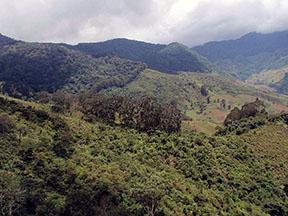Does protection of natural areas improve the health and nutrition status of people in nearby communities? Brendan Fisher and Taylor Ricketts believe that investment in conservation is essential for improving human health and well-being. Motivated by the idea that protected areas in developing countries do much more than just attract tourism dollars, they assembled a group of experts at SESYNC that will examine the relationships between conservation and human health using big data and informatics.
Fisher’s group is using large databases to search for compelling evidence that natural environments and human health outcomes are linked. They hope to make nature stewardship accessible to a wide range of stakeholders by describing large-scale patterns between factors such as the location of marine protected areas and the nutrition status of people in nearby communities. Their project therefore requires collaboration among experts and decision makers from diverse fields such as health, epidemiology, conservation, remote sensing, and ecology.

Case studies, many carried out by members of this research team, have linked variables like fish consumption and reduced childhood anemia in specific regions of the developing world. This large-scale analysis will be the first big data approach that could produce results that would persuade global aid agencies to invest in nature as a means to protect human health and livelihoods. Crucial to their analysis is USAID’s Demographic Health Survey (DHS), an incredibly rich dataset about populations in developing countries that includes self-reported lifestyle information as well as biomarker data on specific disease and health conditions as determined by field tests.
By analyzing the spatial and temporal relationships between environmental and remotely sensed data, and biological health data on human populations, their team hopes to answer questions like: Do infrastructure projects such as dams increase local malaria infection rates? And, does protection of headwater streams reduce the incidence of diarrheal disease downstream?
The availability of global population and land-cover datasets will help them determine how environmental factors like forest cover or infrastructure either help or hinder the interaction of ecosystems and human health. This analysis will determine what kind of conservation investments have the highest potential to benefit human populations, and where those investments are most needed. By leading a team of research experts alongside stakeholders from diverse agencies, Fisher and Ricketts are giving complex socio-environmental problems a socially and scientifically robust analysis that will produce actionable results in the global health arena.